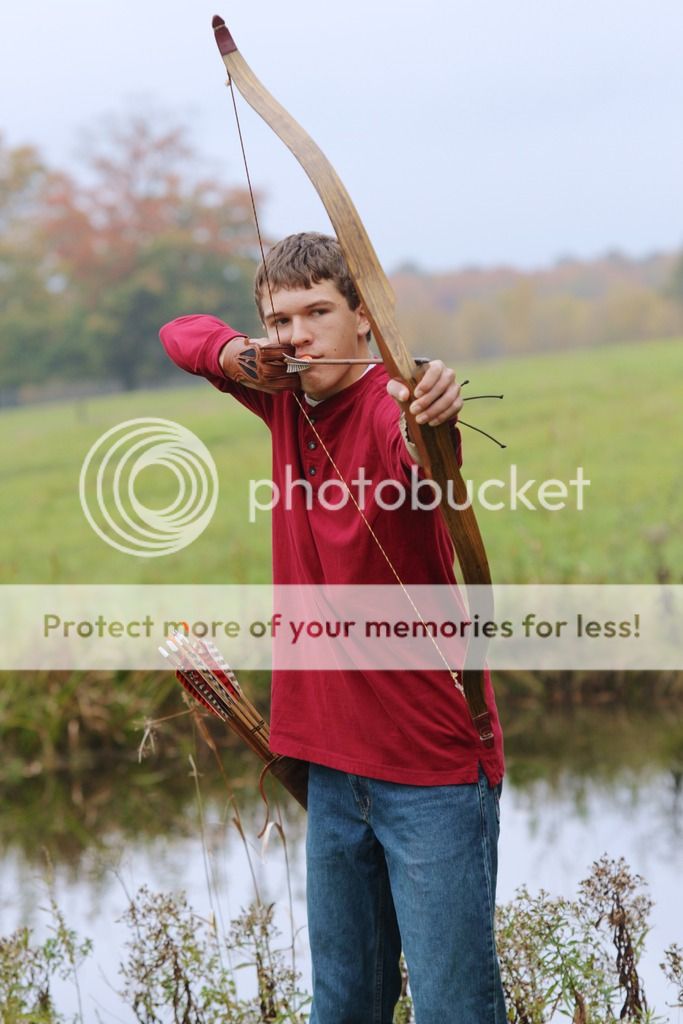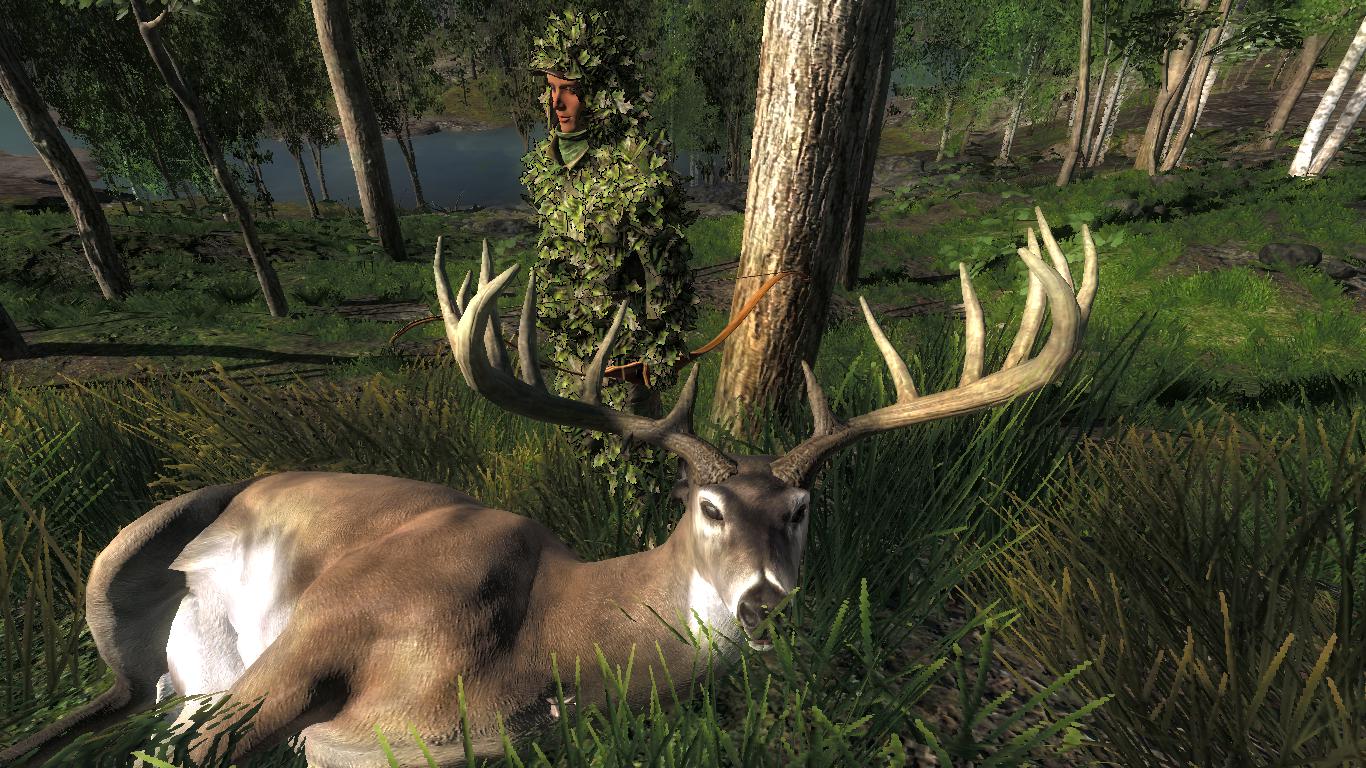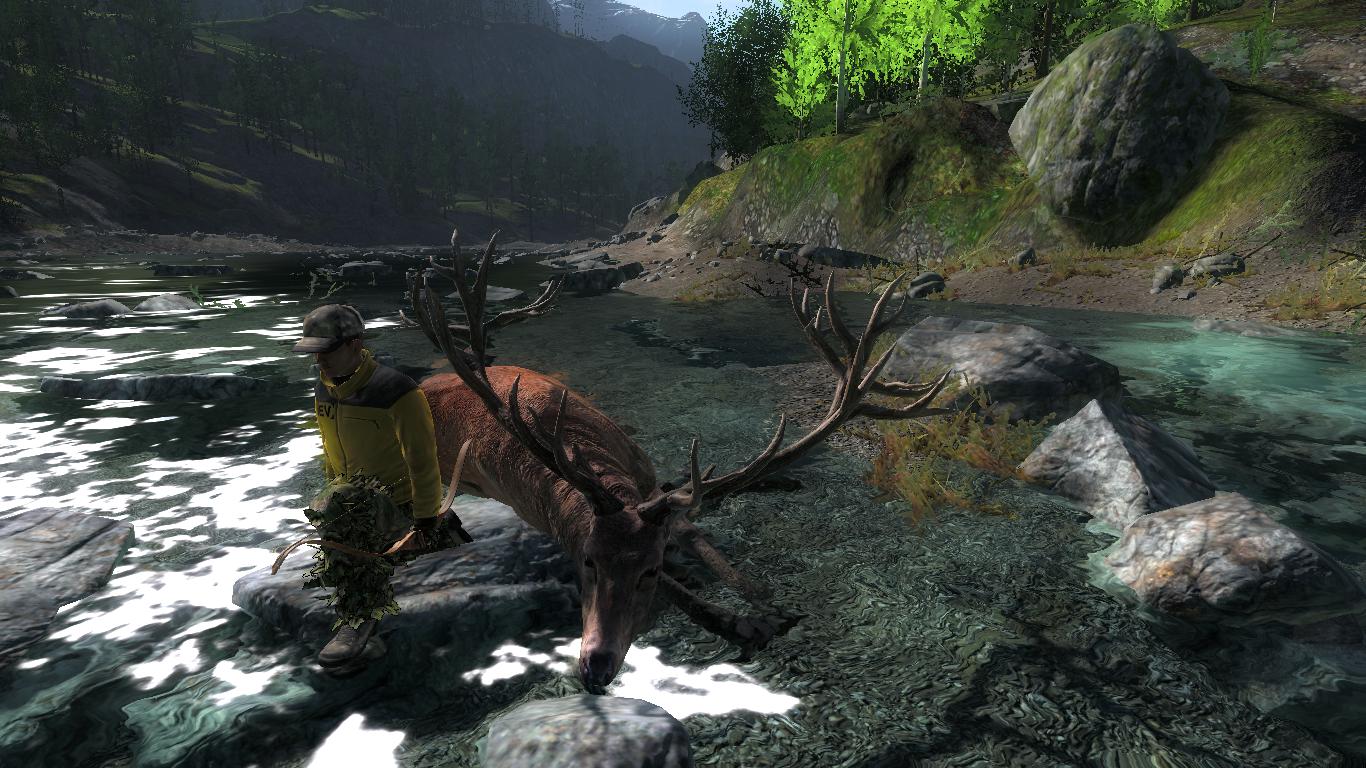Hello Hunters,
Welcome to the new blog series, Community Spotlight for theHunter. For today’s episode I talked to Trenton aka InstinctiveArcher, a member of theHunter community, about his passion for archery and bow building. If you have missed it, we have a great looking Heavy recurve bow in theHunter Classic inspired by one of the bows Trenton built in real life. In the 2nd part of the series, on Wednesday, we will then also learn more about the building process of that very bow in a detailed tutorial. I hope you’ll enjoy it as much as I did 🙂
 What is your name and where do you come from?
What is your name and where do you come from?
My name is Trenton, and I’m from beautiful Northern Michigan.
How long have you been playing theHunter for?
I have been playing theHunter for about 2 years now, maybe a little bit less. I started out as a guest player for about 6 months, and then finally was able to buy a membership, which made the game experience even better.
What was the moment that made you become interested in archery?
I guess what really got me interested in archery and bowhunting was watching my dad shoot his bow. It was a compound bow, which he worked on and sighted in himself. I remember sitting in the garage in the evenings, being amazed at the way that he could work on that bow as if it was second nature. When I was 6, I got my first bow, a red fiberglass compound. I shot that bow a ton. It got to the point where there were more holes on my target than there was foam. As I got older, my dad would buy me a new bow periodically, until eventually I worked up into a 60 pound Diamond Liberty.
I hunted with that bow for two years before really getting serious about the traditional side of archery. I had always taken sticks and tied string on them just to see if I could make my own bow, and that eventually led to me wanting a read traditional bow. I read every article, webpage, and book that I could on traditional archery. Having no experience with trad. archery, my dad wasn’t able to help much. I eventually found a great deal on a used recurve bow, and after an extremely long week, I came home to a long box on the front porch. I wouldn’t be surprised if I’ve put over 10,000 arrows through that bow. I have since then purchased four other traditional bows. However, my real passion is building my own. That first recurve really opened my eyes to how much fun traditional archery is, and my addiction has only grown, as well as my bow collection, and I don’t see either stopping anytime soon.
Do you hunt with bows in real life and if yes, which prey do you usually go for?
Yes, I absolutely love to bowhunt. If gun season never happened, and it was just one long bow season, I would be fine with that. My real passion is bowhunting whitetail deer. They are extremely smart, and getting within bow range is a real challenge. I’ll never forget the rush of adrenaline and emotions the first time that I killed a deer with a traditional bow. I sat in my stand shaking, crying, and laughing all at the same time. Besides deer, I also hunt turkeys, and have hunted black bear a few times. My dream hunt would be an Alaskan moose with a longbow, but I don’t know if that will ever happen. I’ve also done a bit of small game hunting, mostly squirrels and rabbits. However, the whitetails are my real passion.
How and where does one learn to craft a bow? Did you teach yourself to do it?
There are countless resources out there for someone who wants to build their first bow. The Internet has provided some incredible opportunities to read articles, as well as contact other bowyers and pick their brains. You’ll find that almost all are more than happy to help you out. Obviously, learning to build bows takes practice. In order to learn to make bows, you are going to learn how to break them. That’s just part of it. I remember when one of my first bows blew apart in my hands. I just stared at the pieces in shock for a minute, realized what I did wrong, tossed the pieces onto a pile of firewood and started another one. You definitely can’t let a failure deter you, because you are almost guaranteed to break a bow at some point. I am semi-self taught, but I have asked many people for advice in learning to make bows, which has saved me a lot of headaches and a bit of money as well. I like to do things myself, and figure out how to do things on my own, but I’m not above asking for help if I need it.

InstinctiveArcher with one of his trophies
What are the top 3 things you have to take care of when crafting a bow?
This question is tough, because there are different thing to look for when crafting different types of bows. One thing that you need to pay attention to no matter what kind of bow you are making is detail. Bow making can be a game of centimeters. One small miscalculation could be the difference between a sweet shooting bow and a handful of splinters. On a selfbow made from a single piece of wood, attention to detail is incredibly important. One must pay special attention to an all wooden bow to make sure that there are no cracks, also called chrysaling, which shows that bow is overstressed in that area and could break if not fixed. On a fiberglass bow, it is important to continually check the thickness of the limbs with a pair of calipers.
The second most important thing when building a bow is tillering. Tillering is the process of removing material from the limbs in order to make sure that they are both bending evenly. If a bow is not properly tillered, one limb will be overstressed in comparison with the other, and this may cause the bow to break. Also, on an improperly tillered bow, the limbs will spring forward at different times, rather than in unison, which will cause lots of hand shock and erratic arrow flight. I use a tillering stick to tiller my bows, and it works well. I take the stick, which is about 18 inches long and has a groove cut in the top, and stand it on the belly of the bow riser (the part facing the shooter). I then pull the string on the bow up and slide it into the groove. This allows me to view the bow as it would look when drawn back and see any parts of the limb that aren’t bending evenly.
The third most important thing that I pay attention to only applies to laminated fiberglass bow. It is essential to have a good glue line. This means that all laminations are firmly epoxied together and have no gaps anywhere. If there are gaps in your glue line in the bow limb, this will be a big issues. The only way to fix it would be to sand until it is gone, but depending on how deep the gap is, this may not be possible. If the gap runs completely across the limb, then there is no sense in risking using that bow, and it is best to start a new one.
Where do you get the materials for crafting – Can I just walk into a DIY store and buy them?
I buy my bow materials from a company called Bingham Projects. They are a fantastic company which offers any materials that you need, as well as complete start up kits for those who wish to learn to build bows. These kits include blueprints for the bow form, as well as all other materials that are needed to make your first bow. I don’t know of any DIY stores that sell bow making material, and I would recommend using a supplier such as Bingham’s when ordering your supplies. Since bow many materials for making bows are specifically made for bows, I think that it is important to order from someone who specializes in that sort of thing. One of my friends built a bow one time with store bought epoxy, rather than using the recommend Smooth-On for bow building, and his bow ended up delaminating.
If one wants to make a selfbow, than you will need an actual log, or half log, from which you will split out sections of wood to make a bow out of (known as a stave). Depending on what kind of wood you have around you, you can go out and cut your own (Also depending on what kind of regulations apply to cutting timber in your area). The best woods for bows would be yew, osage, hickory, ash, or locust. When cutting a log, I usually look for one about 6 inches in diameter and about 7 feet long. It’s important to cut green wood and not dead. The hardest part about gathering materials this way is that you need to let the wood dry and season, which can take up to five years. Some of the best osage bow ever made have been from osage fence posts that have been in the ground for 40-50 years!

InstinctiveArcher in Val-des-Bois
How much time do you spend on average crafting a bow from scratch until it is ready to be used?
Well, that all depends on how motivated I feel, how smoothly the build goes, as well as what kind of bow I’m making. Most people who have much more time than I do can generally get a laminated bow done in about a week or two. As those who followed the thread on the forum last year know, that particular bow took me about 6 months due to some setbacks and limited time to work on it. Someone who has much more experience than I do can make a working selfbow in as little as one day. Mine took about 3 weeks. It’s definitely one of those things that the more you do it, the easier it gets.
Do you accept orders or is this a purely recreational hobby for you?
This is only a hobby. I’ve had people ask me if I take orders, and I always tell them that I simply don’t have time. Being a senior in high school, I don’t have a ton of extra time, and I would be worried about not being able to complete a bow for someone within a reasonable amount of time. Besides, the better I get, the better the bows are looking and I don’t want to part with them!
If you could change one thing in theHunter, what would it be?
That’s a tough one. My biggest wish for theHunter would be improved AI. As of right now, animals always come to calls, and can be approached fairly easily. I would really like to see animals be a bit more wary, and maybe even circle to get downwind when coming into a call. Continuing with the AI, I would love some animal interactions. With the introduction of wolves, and with them chasing other animals, I feel that this is a huge step in the next direction. Now to just expand that to other species, such as deer fighting.
Lots of people ask me why I shoot traditional bows as opposed to a faster compound or crossbow. The simple answer is that it is more enjoyable. To be honest, I got bored shooting a compound. I could drill a bullseye at 40 yards every shot, but it just wasn’t fun. I would go out, shoot 5 or 10 arrows, then quit because I was bored. Ever since I switched to a trad bow, I have been outside shooting hundreds of arrows almost every single day (except during deer season when I’m out hunting). I never get tired of it. Something about simply focusing on a spot, subconsciously drawing and releasing the bow, and watching the arrow arc through the air and bury in the spot that you’re focusing on is almost magical. It’s relaxing and exhilarating at the same time. I can’t explain it any better than that.
I am also asked quite frequently why I would hunt with a bow that limits my chances at game animals. The truth is, I don’t. I’m convinced that once someone has learned to shoot a traditional bow well, they are much more effective in the field than they would be with a compound. Several of the animals that I have taken, I guarantee I would not have gotten them with a compound bow. A traditional bow has no sights, thus no need to worry about the exact distance of an animal. As long as it is within your personal boundaries in which you can accurately shoot, don’t even think about distance. When shooting instinctively, your mind automatically tells your hand how much it needs to elevate the bow in order to hit the spot where you’re looking. It also allows you to shoot quickly. I can get an accurate arrow off in less than 1 second, which is extremely beneficial for when you need to make a quick shot at an animal.
This snap shooting style is smooth and fluid, as well as accurate and deadly. It also aids in shooting at moving targets. Once, when out rabbit hunting with a buddy, his beagle ran a rabbit past me about 12 yards away. I didn’t really think about it, I don’t even remember drawing the bow. All I remember is suddenly my arrow was in the rabbit and it was flopping on the ground. That shot simply wouldn’t have happened with a compound. The final reason is that I just have more fun in the woods with a traditional bow. It just feels right. When I’m carrying a trad bow afield, it doesn’t feel like a piece of equipment, but more like an extension of myself. It’s a really special feeling.
Thanks a lot, Trenton, that was a very insightful and interesting read. Some of you may ask: ‘But…how do I build a bow now?’ Don’t worry, we’ll get right into that in part 2 of the community Spotlight on Wednesday, with a detailed tutorial on how to build a bow from scratch.
Here you can find the Blog’s discussions thread on the official theHunter forums.
Share this
